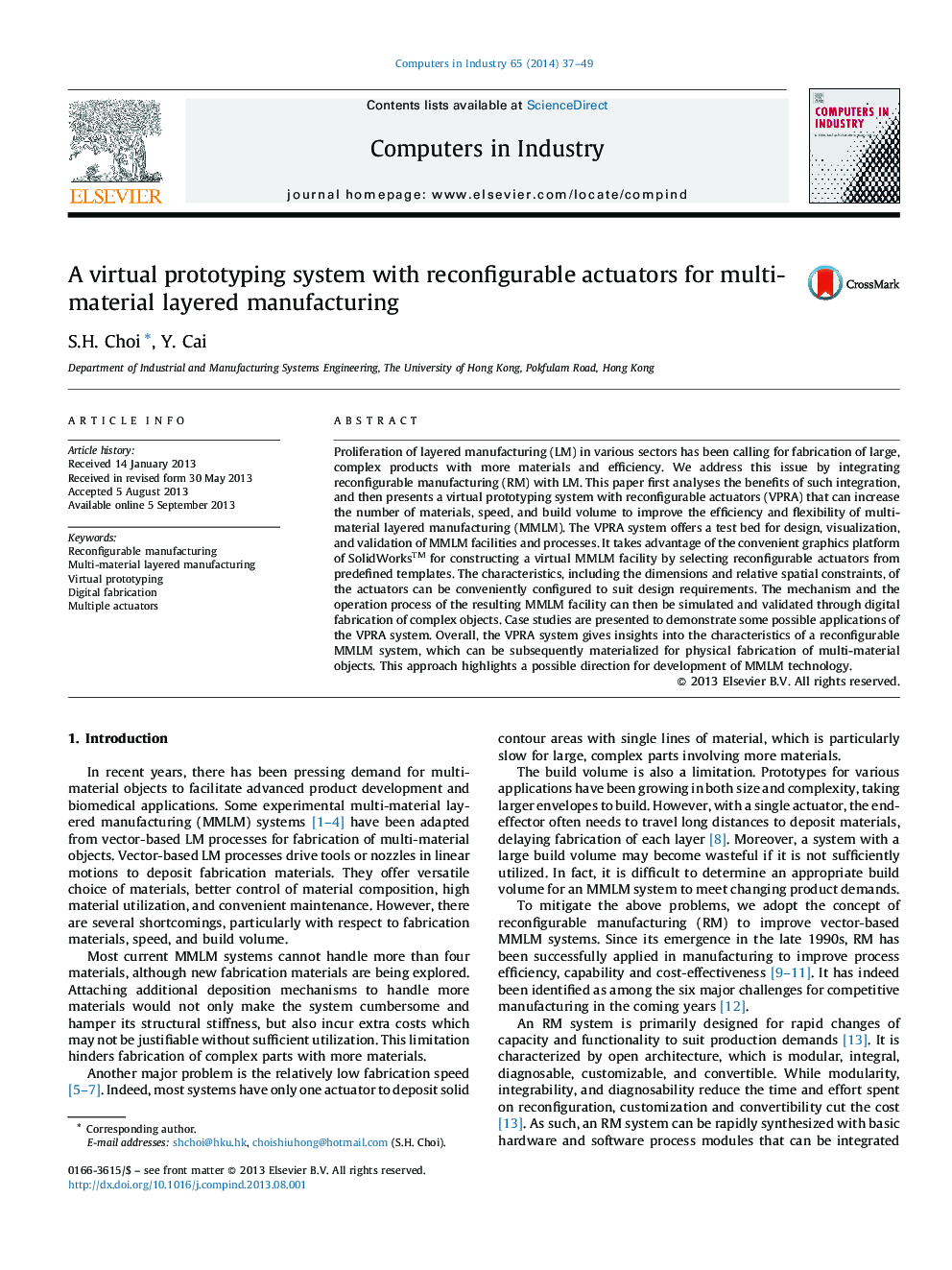| Article ID | Journal | Published Year | Pages | File Type |
|---|---|---|---|---|
| 509028 | Computers in Industry | 2014 | 13 Pages |
•Integrates reconfigurable manufacturing with layered manufacturing to improve multi-material layered manufacturing.•Develops a virtual prototyping system with reconfigurable actuators for design and validation of MMLM facilities.•Considers operational constraints of deposition mechanism with multiple actuators for fabrication of multi-material objects.•Takes advantage of SolidWorks™ for convenient synthesis of virtual MMLM facilities and digital fabrication.•Implements a dynamics simplification algorithm to improve graphics processing and reality of digital fabrication.
Proliferation of layered manufacturing (LM) in various sectors has been calling for fabrication of large, complex products with more materials and efficiency. We address this issue by integrating reconfigurable manufacturing (RM) with LM. This paper first analyses the benefits of such integration, and then presents a virtual prototyping system with reconfigurable actuators (VPRA) that can increase the number of materials, speed, and build volume to improve the efficiency and flexibility of multi-material layered manufacturing (MMLM). The VPRA system offers a test bed for design, visualization, and validation of MMLM facilities and processes. It takes advantage of the convenient graphics platform of SolidWorks™ for constructing a virtual MMLM facility by selecting reconfigurable actuators from predefined templates. The characteristics, including the dimensions and relative spatial constraints, of the actuators can be conveniently configured to suit design requirements. The mechanism and the operation process of the resulting MMLM facility can then be simulated and validated through digital fabrication of complex objects. Case studies are presented to demonstrate some possible applications of the VPRA system. Overall, the VPRA system gives insights into the characteristics of a reconfigurable MMLM system, which can be subsequently materialized for physical fabrication of multi-material objects. This approach highlights a possible direction for development of MMLM technology.
